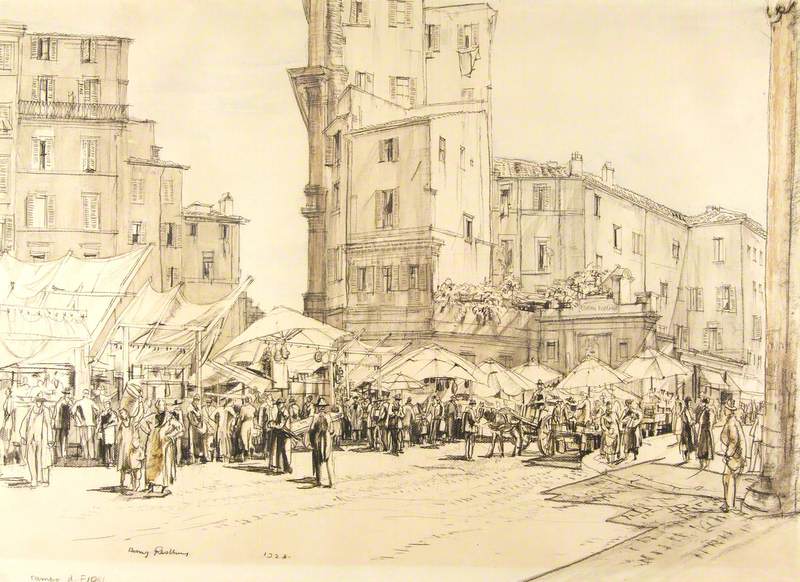
Watercolourist, draughtsman and printmaker who concentrated on architectural-type subjects. Born at Harborne, near Birmingham, he studied at Birmingham School of Art, 1903–9, where he concentrated on mural painting and stained glass design. He later studied for a short time under Henry Tonks at the Slade School of Fine Art. Before moving to London Rushbury assisted Henry Payne to decorate Madresfield Court, near Great Malvern. Francis Dodd persuaded Rushbury to try engraving and etching. Married the artist Florence Layzell. He became an Official War Artist during World War I, a role he repeated in World War II. Rushbury’s first one-man show was at the Grosvenor Gallery in 1921, and he also showed at such venues as the RA, NEAC, RWS, RE, Fine Art Society and Goupil Gallery.
Text source: 'Artists in Britain Since 1945' by David Buckman (Art Dictionaries Ltd, part of Sansom & Company)









